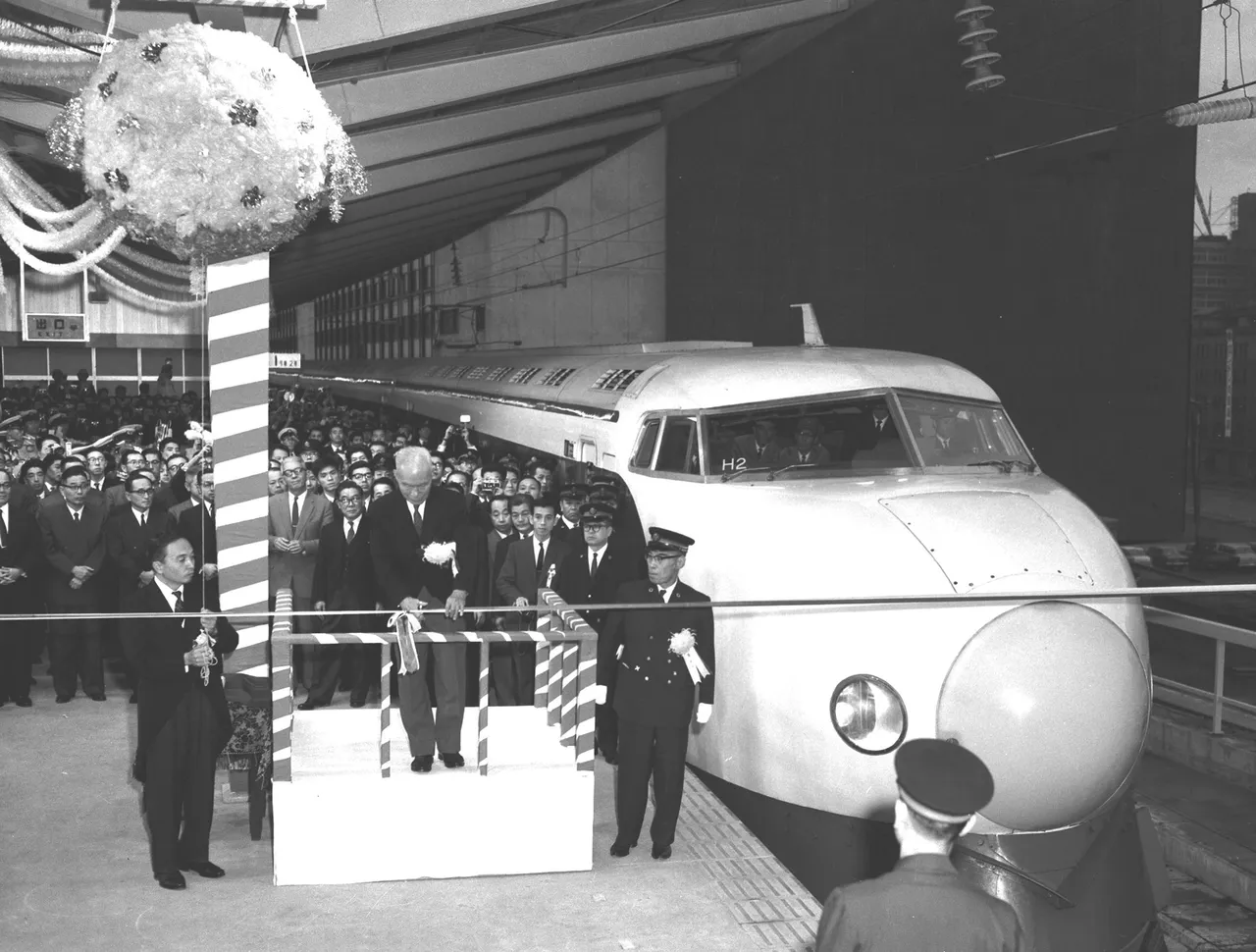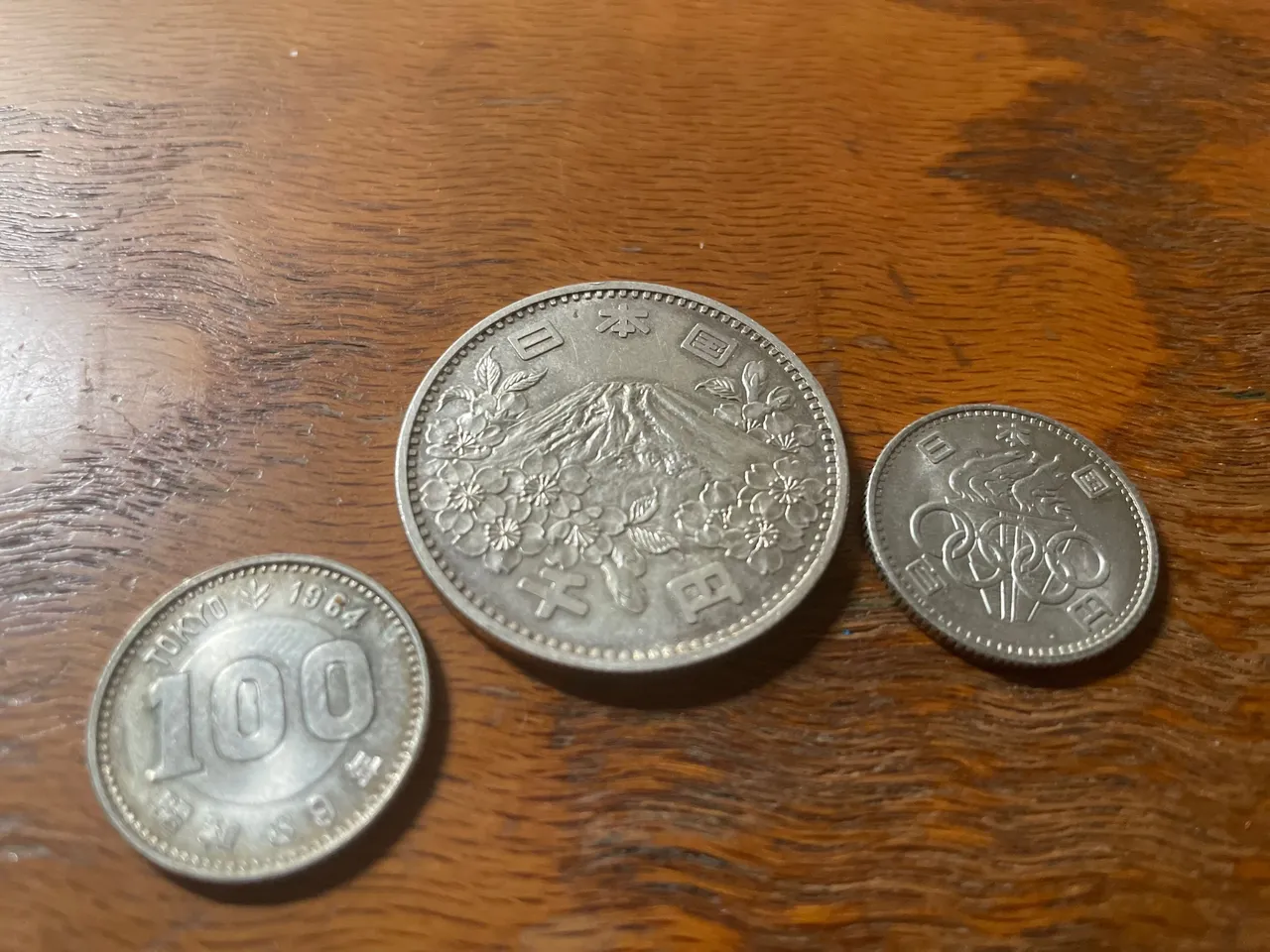1964 was an important year for Japan. The Olympics were set to be in Tokyo and Japan used the occasion as a chance to reintroduce themselves to the world and redesign its image in a much more positive light, from war-torn devastation to beacon of innovation. As I mentioned in yesterday's post, Japan's crazy future technology was on full display.
Train of the Future: The Shinkansen
One of the star attractions was the introduction of the Shinkansen, or the Bullet Train. Launching just days before the Olympics, it connected Tokyo with Osaka, Japan’s two largest cities, at unprecedented speeds. The Shinkansen symbolized Japan’s post-war resurgence and engineering ingenuity, showcasing an ability to blend speed, safety, and service, reshaping perceptions of train travel globally.

Broadcasting Breakthroughs: Color TV and Live Satellite Feeds
Another technological leap was the advent of live color broadcasts of the Olympics, a novelty at the time that brought the vibrancy of the games into homes around the world. This was Japan’s first use of satellite technology for broadcasting, which not only enhanced viewer experience but also demonstrated Japan’s capabilities in emerging telecommunication technologies. Magic!
Architectural Ingenuity: The Yoyogi National Gymnasium
The games also saw the construction of avant-garde facilities such as the Yoyogi National Gymnasium, designed by the renowned architect Kenzo Tange. Its innovative design and use of suspended roof structures became a highlight of modernist architecture in Japan, serving as a testament to the country’s design and architectural sophistication, seriously impressing the athletes and spectators alike.

The Digital Revolution: Crazy Future Computer Technology at the Forefront
The use of advanced computer systems was a game-changer at the Olympics. For the first time, computers were employed to manage everything from event scheduling to real-time results dissemination, using futuristic electronic scoreboards. This not only streamlined operations but also solidified Japan’s reputation as a frontrunner in the burgeoning field of computer technology, cementing Japan's image as a technology paradise, an image that largely persists to this very day.
Commemorative Currency: A Numismatic Celebration
In celebration of the Olympics, Japan minted two commemorative coins—a ¥100 and a ¥1000 coin. While intended for circulation, their quick uptake by collectors limited their availability. The ¥100 coin, comprising 60% silver, and the ¥1000 coin, made of 92.5% silver, feature designs that reflect Japanese culture and achievements. The ¥100 isn't much to look at, but its bigger brother is pretty attractive, with that stunning depiction of Mount Fuji.


These days you can find both of them easily enough. The ¥100 is fairly common and can be had from many collectors for only a little. The ¥1000 is also pretty common—again, these were intended for circulation, so plenty of them were minted—but collectors do try to hike up the price for that one. When I look on ebay, I'm shocked at what some people are trying to get for it.

These technological advancements and cultural exhibitions during the 1964 Tokyo Olympics not only transformed Japan’s global image but also set a new standard for how technology could enhance and influence global events. The legacy of these games continues to influence Olympic hosting standards, proving that the 1964 Tokyo Olympics were not just a sporting event but a pivotal moment in Japan’s modern history.
A far cry from today's games which seem to have only succeeded in many people fight about the chromosomes some of the participants have. Oh well. At least we can look back to when the Olympics really were something to behold.
❦
 |
David LaSpina is an American photographer and translator lost in Japan, trying to capture the beauty of this country one photo at a time and searching for the perfect haiku. He blogs here and at laspina.org. Write him on Twitter or Mastodon. |